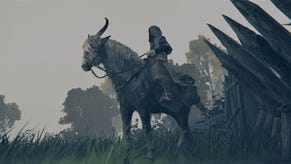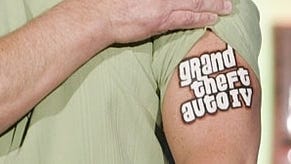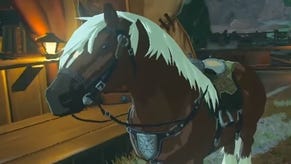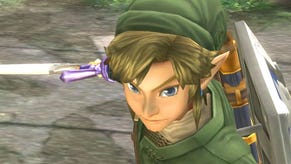The Legend of Zelda: Twilight Princess
Deserves a spotlight.
Rob's take
Indy Eat Your Heart Out
At the core of any Zelda game lie those locations and puzzles, though, and ultimately no matter how interesting and mature its narrative and characters may be, Twilight Princess would fall on its face if it couldn't deliver solid, interesting temples to explore and ultimately solve. Your adventures on Hyrule Field are more interesting than ever before, certainly - including as they do some new horseback combat sequences, and areas where you play as a wolf and therefore have no access to items, but can instead use heightened animal senses, track scents and follow your sarcastic but ultimately hugely likeable twilight world companion, Midna, through sequences of tricky jumps to reach new areas. However, as compelling as these experiences are, it's the temples which make or break Zelda.
Thankfully, by and large, it's more make than break. While the temples are familiar in theme, they are filled with new and interesting puzzles which strike a balance between challenge and frustration that few other games can manage. Solving a puzzle in Twilight Princess - and each temple is essentially one massive chaining puzzle, with cause and effect leading you from start to finish - is a satisfying experience, giving the player enough hints to make the solution logical rather than a leap of faith, and making it just tricky enough that working out what you need to do provides a genuine sense of achievement.
Where there are exceptions to this rule - and sadly, those exceptions do exist in the game - they are all the more apparent because they represent a bump in an otherwise perfectly balanced difficulty curve. It is to the game's credit that after over thirty hours of play, I can only think of a few minor instances of puzzles which I felt were difficult for the wrong reasons; any other puzzle which I was stuck on for a while was due to user error, and the final solution was both satisfying and a little embarrassing, in a "how didn't I see that one..." sense. It is however worth noting that the game takes a few liberties in terms of how much prior knowledge of the Zelda series it assumes - and while new players probably won't be stuck for long, not least because the game offers optional hints at solutions at the first sign of you being genuinely in trouble, it might take them a little longer to get into the mindset required for puzzle solving.
The game bosses, too, are fantastic - requiring a heady combination of lateral thinking and quick reactions to defeat, but never lapsing into frustration due to twitchy controls or difficult timings. At their best, some of the boss battles are reminiscent of Shadow of the Colossus, with Link facing off against gigantic creatures whose weak points must be exploited using a clever combination of the tools and weapons at your disposal, and each boss battle progresses through various different stages, never asking you to repeat the same manoeuvre more than a couple of times and challenging you afresh at each stage. The boss battle is, in effect, a worthy payoff at the end of the dungeon, and it's great to have a game in which the boss is something you're excited about reaching, rather than dreading as a hurdle to be overcome.
Regress to Progress

One hangover from Zelda's earlier iterations that I could have done without, though, is the save system - which does allow you to save anywhere, but when you save inside a dungeon, merely saves the state of the dungeon itself and dumps you back at the beginning of it next time you load the game. In many instances, this can leave you on the wrong side of a complex set of jumps or timed runs (the early fire-themed dungeon is particularly bad on this front) to get back to your original position - a frustration which makes it more appealing to try and finish each dungeon in one sitting, which isn't always exactly an ideal situation.
The save system isn't the only aspect of Twilight Princess that feels a little dated, either. Graphically, the game is initially disappointing - it shows its GameCube origins clearly, and even at that it doesn't rival titles like Resident Evil 4 for graphical quality. However, this is more than compensated for by the artwork of the game, which is of a consistently high quality; all too often, we consider game art and game graphics to be the same thing, and nowhere is the distinction more clear than in Twilight Princess. The graphics are dated but functional - the art, however, is wonderful, and combined with superb animation and a rich, detailed world which focuses more in providing interaction and setting than on modelling individual blades of grass, it makes for a game which is absolutely great to look at, once you get past the distinctly last-gen visual quality.
In terms of music and audio, too, the traditional heritage of the game is apparent - but I can't say that I agree with critics who have complained about the lack of spoken dialogue, a touch which could have been nice, but could equally have spoiled the game, and whose absence certainly doesn't break the experience in any way. The music, too, is certainly guilty of a certain synth quality - and having heard an orchestral composition of Zelda's music in London only weeks ago, it is tempting to wonder how much better it would have sounded with a full orchestral score. This criticism, I feel, is more valid - for a game of this scale, a synth is no substitute for an orchestra, and after focusing so much on the production values of the rest of the game, Nintendo have dropped the ball slightly by relegating the excellent score to being somewhat tinny and hollow in this fashion.
Heroes made; Legends born
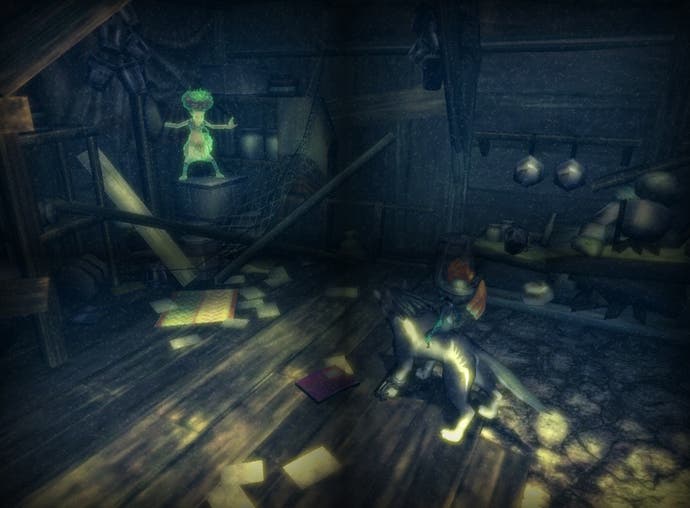
After spending so much time ruminating over Zelda's triumphs and its flaws, actually deciding on a final score for the game - a single number to plonk on the end of the review like a line in the sand - feels utterly arbitrary. Twilight Princess is a game which I believe anyone with an open mind can have fantastic enjoyment from; it is a triumph of narrative, of game design, and of production values, a consistent and beautiful benchmark for quality within its genre. It's a better game than Ocarina of Time - a better game than any 3D Zelda, in fact - and is one of the few games which I honestly believe everyone should try out, at least. All of which makes me lean heavily towards a ten.
On the other hand, Eurogamer has an unspoken but nonetheless clear agenda of rewarding innovation, and a game has to be not only a pinnacle, but a pretty damn astonishing pinnacle, for it to achieve a ten by simply doing old things exceptionally well. Twilight Princess does innovate in places, but most of the time it evolves instead - which is welcome, and positive, but perhaps not as worthy of reward, to my mind. Equally, I must take into account that the game is flawed; just as Hyrule bears the scars of history in this game, so too the game itself bears the scars of its own history, with some questionable gameplay mechanics (such as the crippled dungeon save system) that owe more to tradition than to genuinely well-planned design.
All of which stays my hand, and leaves me with too many misgivings to award a ten. I still believe that Legend of Zelda: Twilight Princess is one of the finest games ever made, and is the pinnacle of a truly legendary series - but a little more risk taking, and a little more regard for the evolving conventions of gaming, would have elevated this even further. There is room for improvement, and the score reflects that - but it's by no means a suggestion that there's any real reason not to play one of the best games of the last five years.

